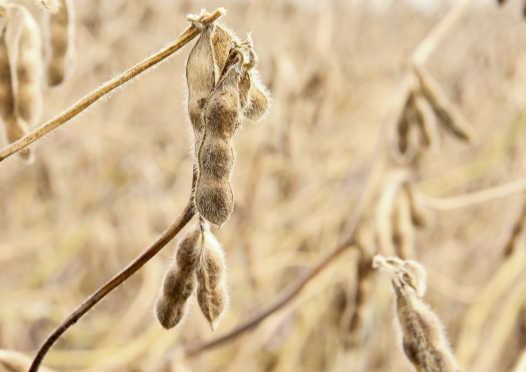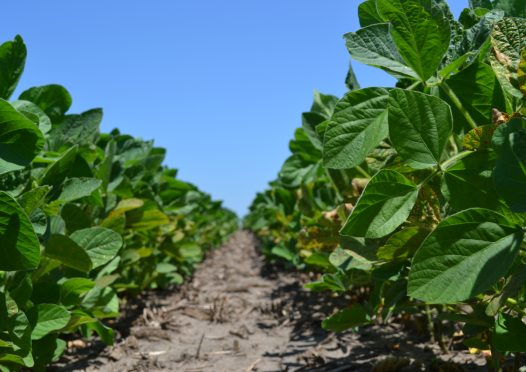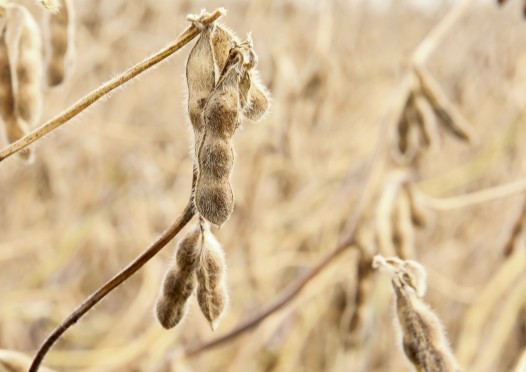ILSOYADVISOR POST
Meeting the Challenge of 100-Bushel Soybeans
With all the talk taking place about boosting soybean yields to 100 bushels per acre, there are plenty of agronomic questions about how we can do this while still remaining profitable and sustainable. There is ample evidence that growers can break 100 bushels if the weather cooperates, you relieve stressors and feed the plant. But there is a certain amount of luck and randomness involved as well. Breaking 100 bushels and trying to repeat it is difficult; getting a whole field’s yield to break 100 bushels is another story.
The world's population stands at nearly 7 billion today and is expected to exceed 9 billion by the year 2050. By then about 60 percent of the population will reside in China, India and Southeast Asia and to feed everyone they will need to import major commodities like soybeans. Soybeans will become increasingly important as a source of vegetable protein, vegetable oil and meal for livestock feed. Both yield and compositional quality will need to improve.
Over the decades we have seen a slow but steady increase of 1/3 bushel-per-acre-per-year, not outstanding but steady. It was that slow and unnoticeable rate of yield gain that led agronomists and growers to complain that soybean yields were stagnating. This was viewed relative to corn yields that were shooting up based on a faster rate of genetic gain and adoption of better management practices.
But soybeans wouldn’t be kept down. New breeding methods along with more investment in soybean breeding have increased the rate of genetic gain to 1/2 bushel-per-acre-per-year. But more importantly, we are learning how to grow high-yield soybeans and no longer have to settle for yields in the 40- to 50-bushel range while corn yields steadily break 200 bushels.
It seems very feasible now to produce 70 to 80 bushels by selecting the right variety, planting earlier in the season, utilizing seed treatments and protecting the foliage—that is if the weather also decides to cooperate in the spring and summer. It is much more difficult to put together baseline and foliar fertility programs that consistently perform, but they are important aspects of high-yield soybean production.
Increases in corn yield were due to genetic improvement; more effective weed, disease and insect control methods; development of more aggressive root systems and stress tolerance within the plant; and moving to higher plant populations. Much of the same can be said about increases in soybean yields, but instead of increasing populations, growers are reducing populations. And with early planting it’s even more important to lower populations to prevent over production of biomass and plants that get too tall. Some speculate that it is likely that increases in soybean yield may outpace increases in corn yield.
When it comes to producing 100-bushel soybean yields, University of Illinois scientist Dr. Fred Below refers to the “Six Secrets of Soybean Success” that have the most impact on soybean yields.
- Weather: The number one influence on soybean yields, but outside our control
- Fertility: Extra fertility has the most significant impact on yields over about 60 bushels
- Foliar protection: Fungicides and insecticides protect foliage and prevent yield loss
- Genetics: The fullest maturities produce the greatest yield increases
- Row spacing: Narrower, 15- or 20-inch rows increase yield and crop yield is more responsive to more intense management
- Seed treatment: Early season protection protects yield potential
Below has been evaluating the effect of a range of management practices and products on soybean yield for over five years now. You can learn more about his findings at http://cropphysiology.cropsci.illinois.edu/research/six_secrets.html.
ISA will be publishing a summary of his results in an upcoming fall edition of its Field & Bean magazine.
Soybean agronomist Daniel Davidson, Ph.D. posts blogs on agronomy-related topics. Feel free to contact him at djdavidson@agwrite.com or ring him at 402-649-5919.





Comments
Add new comment